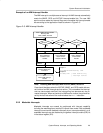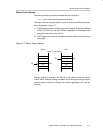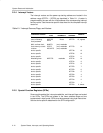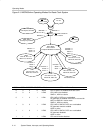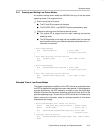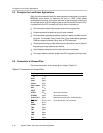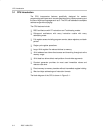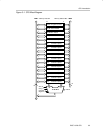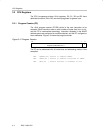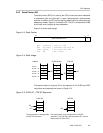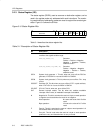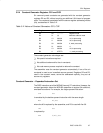
Principles for Low-Power Applications
2-16 System Resets, Interrupts, and Operating Modes
2.4 Principles for Low-Power Applications
Often, the most important factor for reducing power consumption is using the
MSP430’s clock system to maximize the time in LPM3. LPM3 power
consumption is less than 2 µA typical with both a real-time clock function and
all interrupts active. A 32-kHz watch crystal is used for the ACLK and the CPU
is clocked from the DCO (normally off) which has a 6-µs wake-up.
- Use interrupts to wake the processor and control program flow.
- Peripherals should be switched on only when needed.
- Use low-power integrated peripheral modules in place of software driven
functions. For example Timer_A and Timer_B can automatically generate
PWM and capture external timing, with no CPU resources.
- Calculated branching and fast table look-ups should be used in place of
flag polling and long software calculations.
- Avoid frequent subroutine and function calls due to overhead.
- For longer software routines, single-cycle CPU registers should be used.
2.5 Connection of Unused Pins
The correct termination of all unused pins is listed in Table 2−2.
Table 2−2.Connection of Unused Pins
Pin Potential Comment
AV
CC
DV
CC
AV
SS
DV
SS
V
REF+
Open
Ve
REF+
DV
SS
V
REF−
/Ve
REF−
DV
SS
XIN DV
CC
XOUT Open
XT2IN DV
SS
43x and 44x devices
XT2OUT Open 43x and 44x devices
Px.0 to Px.7 Open Switched to port function, output direction
RST
/NMI DV
CC
or V
CC
47 kΩ pullup with 10nF pull down
R03 DV
SS
COM0 Open
TDO Open
TDI Open
TMS Open
TCK Open
Sxx
Open




